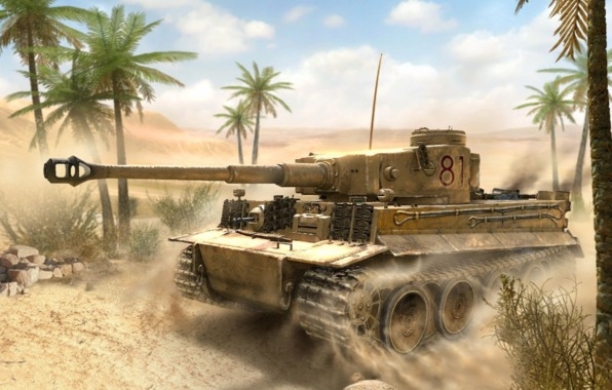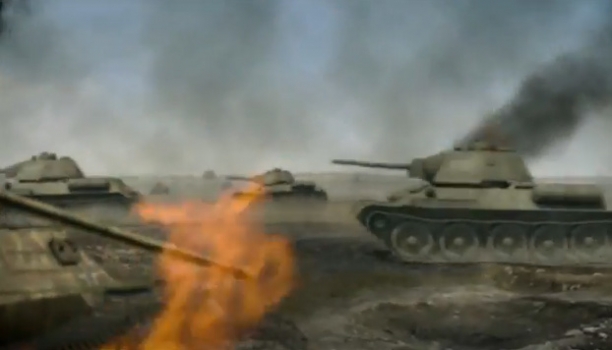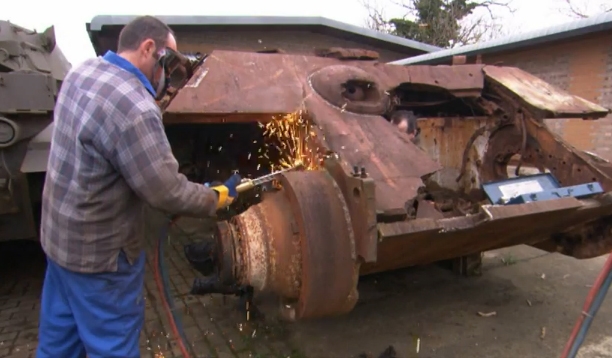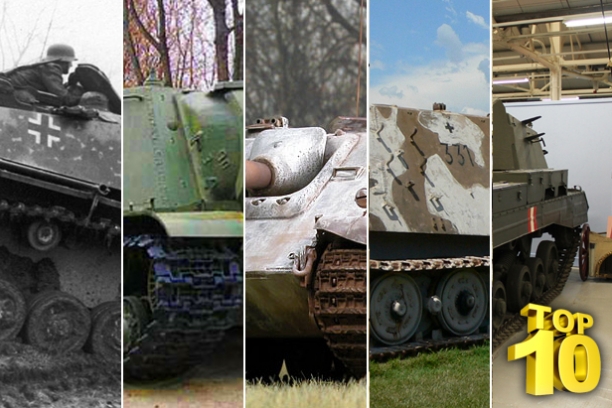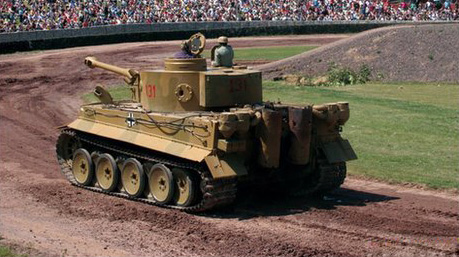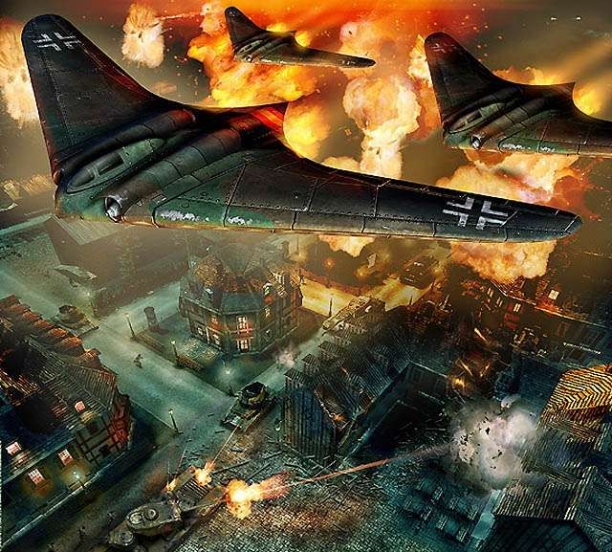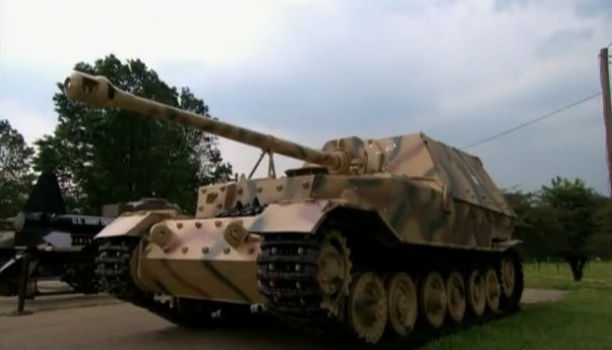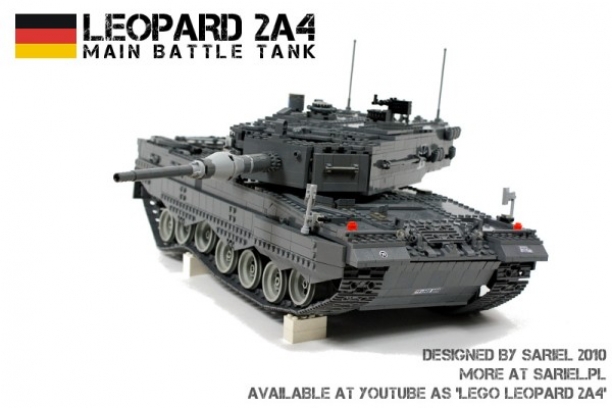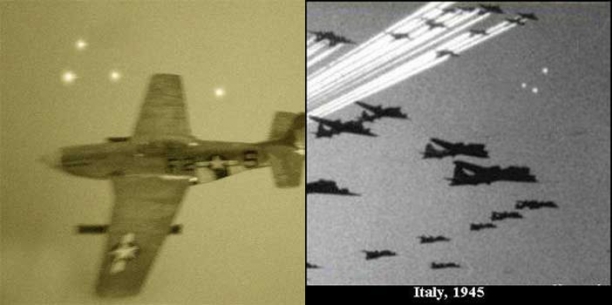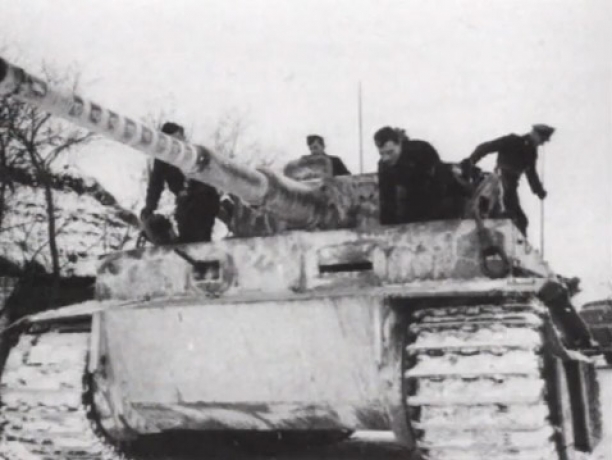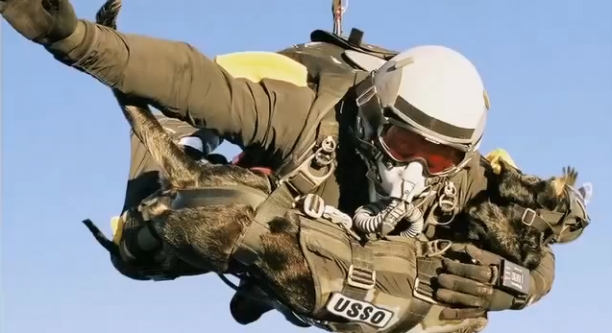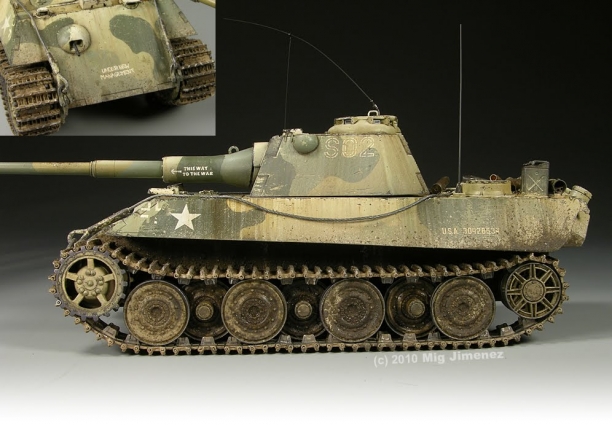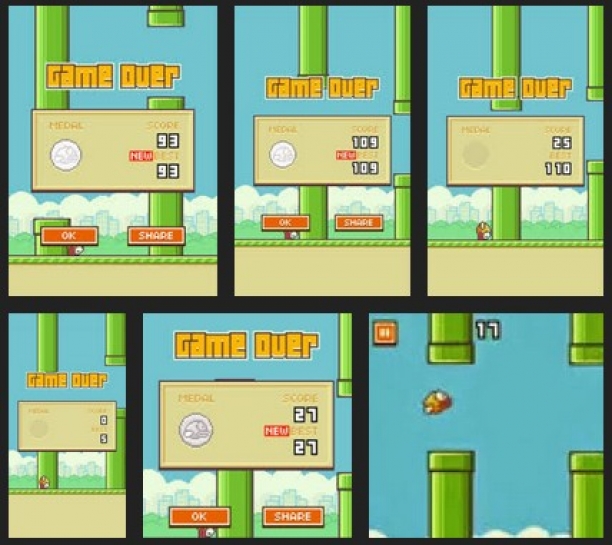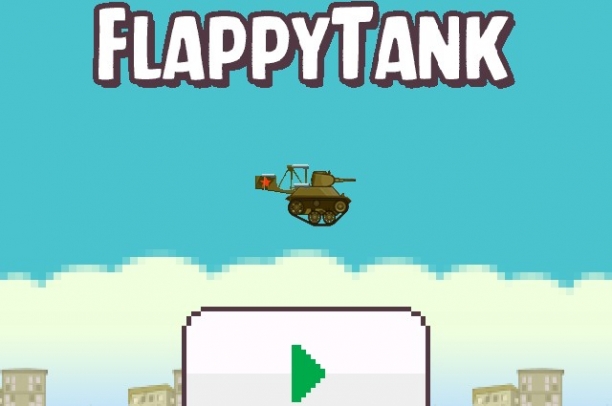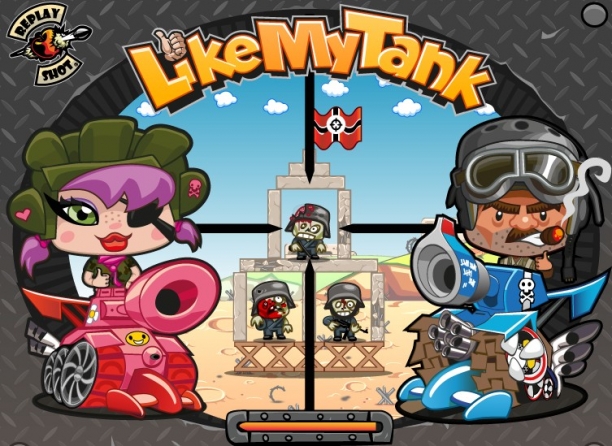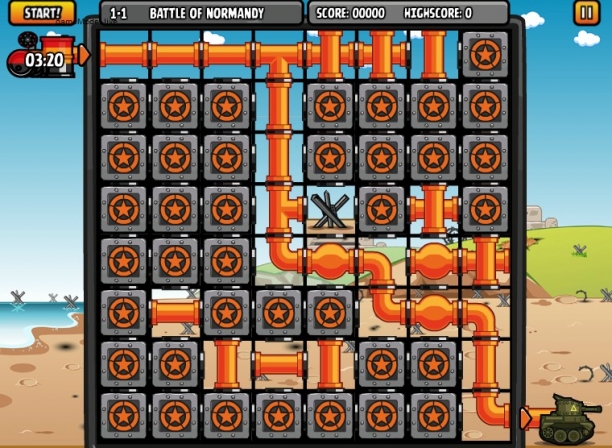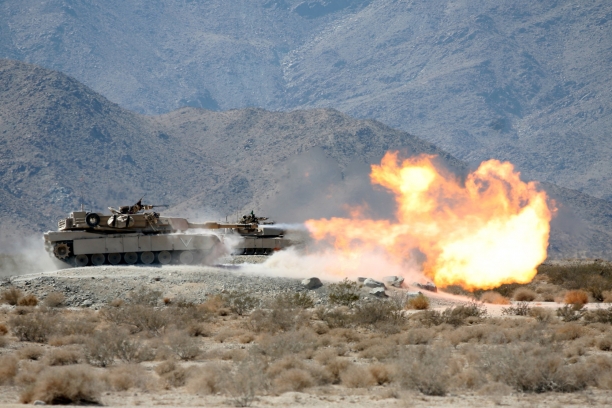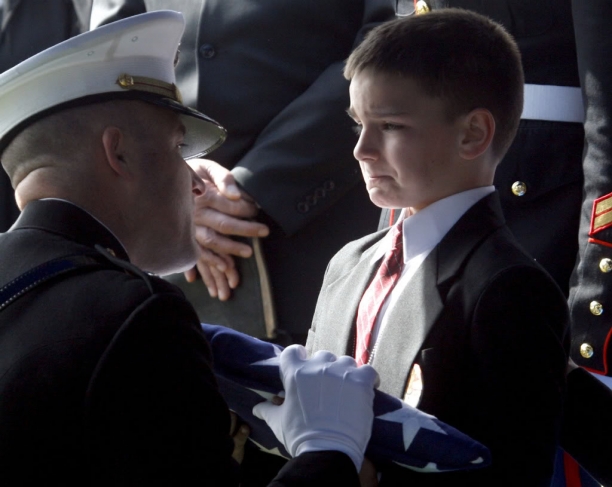Leopard 2A4 out of Lego? Better believe it. Watch it roll over obstacles with its rotating turret, gunner's counter rotation gun system, self-leveling main gun. It is 1/18 of the original German war tank. Can you imagine what all mischief you could get into with this?
|
This Nazi heavy tank built in 1942 which was used during World War 2 was called Tiger I. The ultimate formal German name was Panzerkampfwagen VI Tiger Ausf.E, oftentimes called Tiger for short. It was a response to a remarkable T-34 and the KV-1 which were part of the Soviet armor during the first months of encounter prior to the invasion of Soviet Union. Tiger was developed to counter and combat Soviet armors.
The design of Tiger I provided The Wehrmacht (refers to the German armed forces of WW II) their first tank mounting the 88 mm gun in its first version called the KwK 36. This gun was the primary weapon of Tiger I. It also showed its high effectiveness both on air and ground targets. The Tiger I was the combat fighting tank used during World War II on all German battlefronts. It was proven to be strong and tough and generally positioned in independent tank battalions.
What do you think?
|
One of the largest battles in the war was the Battle of Kursk. It was one of the biggest and most important tank battles that ever happened. The aim of the battle for the German army (they called it "Operation Citadel") was to make the Red Army weak, but it actually ended with the Soviet army winning and the German Nazi army taking a huge loss.
|
Jagdtiger or "Hunting Tiger" was one of the heavy tank destroyers come out of German factories during the Second World War. It was officially named the Panzerjäger Tiger Ausf (inventory tag Sd. Kfz. 186) because it was primarily based upon a Tiger II chassis which has been lengthened. This heavy duty tank was superior over any Allied tank and out-ranged them all. Its main gun was a PaK 44 L/55 main gun (128 mm). It was considered by the Axis forces as the heaviest operational armored vehicle utilized in WWII.
|
Tank Overhaul is a place where hobbyists get together to share their knowledge of technology to put some of the amazing tanks of our time back together again. You can watch both a German and an American tank go from parts to their stunning glory again as they are reconstructed.
They are currently working on putting a Panther tank back together again. It was actually found at the bottom of a river in Poland and it won't be easy for these professionals to put it back together again. By reconstructing the tank, they are able to take a glimpse into history and better understand the events of WWI.
|
The T 34 Soviet medium tank was first used in 1940 and had a very large influence on the ways that tanks are designed. It has been talked about as one of the best tanks that was used during the Second World War. It had the best balance as an overall tank, but it wasn't designed to hold the passengers very well, didn't have radios, and performed tactics poorly. That being said, it had guns that made it a fierce adversary for the time. The three inch machine gun was by far the best tank gun at that time. The armor also made it hard to destroy by other tanks. German military officials called it one of the fiercest tanks on the field of battle.
|
Most of the German and Russian weapons that were used to destroy tanks during the Second World War didn't have turrets, but some of the English and American weapons did. Most of the tank destroyers had the same size gun that tanks had, but at a less expensive cost. These tank destroyers did their job well against tanks, but when it came to going up against soldiers on foot they were very ineffective. Below you'll find a list of the top ten tank destroyers in the world. They have been scored based on how well their armor protects them, speed, the power of the main gun, and their experience on the field of battle.
|
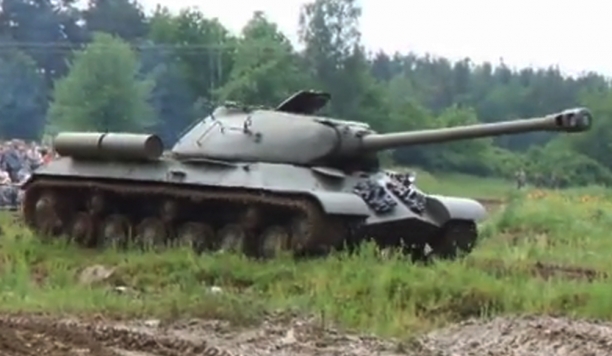
The IS-3 or the Iosef Stalin (Joseph Stalin) IS3 was part of a series of tanks that served Soviet Army during the WWII. The whole series was based upon the KV tanks and began with the IS-1 that was produced in the year 1943. The IS-2 came next during the very same year. The IS-2 came fitted with the 122, main gun - a lethal weapon indeed. The IS-3 was developed afterwards because the Soviets were convinced of its value.
The IS-3 modifications were a re-design of the whole series. For instance, the armor protection of the IS-3 is the best of the lot. This tank has better turret armor protection than its predecessors and is thus a safer machine to operate overall. The armor of the whole series was already a stand out. There were other modifications made on the turret. It was well-rounded and there was more space for the turret crew. Additional projectiles were also given ample space. For better protection from ballistics, the glacis plate had increased slope. The combined modifications on the turret and hull resulted in a lowered silhouette. This made the tank more difficult to track and target from any given angle.
The chief armament of the IS-3 was the 122mm (121.9mm). This was infamous during the war for its excellent penetration capacity and the flexibility that came with it. Expert crew can let off from 2-3 rounds every minute. The projectile choices were expanded as well to include 10 AP or armor-piercing rounds. In addition, there were 18 HE or high-explosive fragmentation. The IS-3 was capable of facilitating battlefield targets.
In October, 1944 the IS-3 prototype was designated as "Object 703." After a very short while and a series of evaluations this was approved for production. Factories in the Soviet Union capable of constructing heavy vehicles were soon busy with construction. The very first operational IS-3 tanks were entered into the inventory of the Soviet Red Army on May, 1945. The IS-3 appeared in the victory parade through the city of Berlin on 7th of September, however, it did not see much action at the front because the war in Europe was mostly over. Adolf Hitler had taken his life and the German capital has fallen under the control of the Soviet Army. Only a few pockets of the German war machine were still continuing the fight, so not much left to deal with.
But it was different in the Pacific because the Soviets were still fighting against Japan. It was said that an IS-3 regiment was deployed in August 1945 in the Far East (mission unknown). By the end of that month the Japanese empire would surrender signaling the end of the war in the Pacific and WWII.
At the time that the Second World War ended, the IS-3 was the most advanced war vehicle of its kind. The Soviets continued producing the IS-3 until mid-1946. About 2,311 units were completed. All the IS-3s in existence were inventoried by the Red Army. The tanks were in the Soviet stockades (it's allies as well) during the years of the Cold War. Even the Western powers had their eye on the IS-3 especially because this tank was a key influence in Soviet tank design in the twenty years that followed.
The IS-3 has a distinctively stout, low-set profile with a curved turret. Somehow its appearance recalls that of an upside-down frying pan. The rifled barrel is long with muzzle break that is double-baffled. The side track on either side has 6 road wheels. The drive sprocket is aft with 3 track return rollers and the idler is held in forward position. The rear compartment is where the V2-IS engine is located while the turret is forward. The heavy chassis was powered by the 520 horsepower engine capable of a top speed of 25 mph. Its range is 115 miles. The IS-3 weighs about 45.77 tons, was 32 feet, 4 inches long and eight feet high. It can be operated by four personnel.
The entire tank body was protected by 20mm - 230mm thick armor which would make it nine inches at the thickest areas. Aside from the armor, the IS-3 was equipped with the D-25T series main gun (121.9mm) and was formidable indeed. Enemy forces loathed attacking it from the front. Its primary weapons were 28 rounds of projectiles (122mm). The secondary armament was a 12.7mm anti-aircraft machine gun which carried 250 rounds. The IS-3 also had one to two 7.62mm anti-infantry machine guns which carried 756 rounds.
The IS-3's design was a step forward in a number of areas. However, it was still beset with mechanical problems much like other heavy tanks of that size. With regard to its operational abilities, the power pack was very unreliable. The transmission systems and engine were both prone to failure. These defects as well as a few matters concerning the hull were possibly due to the speed by which the Soviets pushed for its design & production. It is therefore not surprising that quality control problems would arise. Because of these limitations, a set of upgrades were done, intended to improve certain areas. Some of the improvements made were on the clutch mechanism, road wheels, and new radio equipment. The improvements added to the total weight of the tank by four tons and this additional burden hampered the IS-3's performance a bit.
The Red Army made good use of the IS-3 from the late 1940s until well into the '50s. During the Cold war, the tank underwent a modernization scheme that helped maintain its relevance. After all, its initial design was meant for the World War 2 stage and the Cold War was very different. A number of modern thoroughbreds eventually succeeded the IS-3 and this formidable war machine was soon retired to the history books. Nevertheless, before her time was ended, the IS-3 served a few foreign armies. Egypt was known to favor the IS-3 and even showcased the tank on parades as seen in 1956. The Israeli military captured a few units and these were reconstituted for use of the IDF. The IDF retrofitted the IS-3 with engines from the T54 tanks. The modification improved the performance level for the IDF and gave it a more modern feel. After China's part in the Korean War, this Communist nation also received IS-3 deliveries. The IS-3 was also used as a trainer for new Soviet tanker models before it was taken to storage. The Soviets maintained the IS-3's designation as the most dominant tank in the whole world. Few war vehicles could dispute this distinction.
|

The Leopard 2 is a tank which was developed for the German Army in the early '70s by Krauss-Maffei. It was the successor of the Leopard 1 and soon became the German Army's chief battle tank. The Leopard 2 was first put into service in the year 1979. Aside from Germany this tank came into service in 12 countries in Europe and even some non-European nations sought after it, so there is no wonder around 3,480 Leopard 2 tanks were manufactured in total. In the battlefield, the Leopard 2 made its debut when the German Army brought it to the battlefields of Kosovo. The contingents from Canada and Denmark brought their own Leopard 2s in Afghanistan as part of the International Security Assistance Force.
This tank saw two batches of development. The original models (until Leopard 2A4) had a turret armor that was vertically oriented. The improved models or the Leopard 2A5 on the other hand (along with the versions that followed) boasted of a turret appliqué armor that was angled and arrow shaped. Other improvements were made to the newer batches as well. All of these tank versions were equipped with laser range-finders, digital fire control systems, advanced night vision equipment, thermal imaging (later on) as well as coaxial machine gun & fully stabilized main gun. The upgraded sighting equipment is worth mentioning since it made the tank the very first vehicle to utilize an LLLTV or low-light level TV system. This tank was designed to engage any moving target while in motion over rough terrain.
|
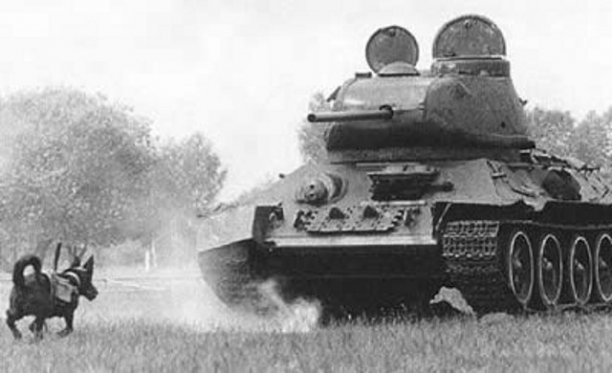
Bomb dogs, anti-tank dogs used by the Russian Red Army were true victims because of desperation. The Russians were overwhelmed by the Eastern Front from the German Wehrmacht so they had trained dogs to carry bombs to specific targets. Once they released the device from their teeth the dogs should have gone back to their operator. This was nearly impossible to get them to do this and in the end they just blew up the dog when they reached their target.
The average bomb the dogs carried were 26 pounds that was strapped onto them. They were kept deliberately hungry all the time. This made the dogs run to targets thinking they would be fed, totally unaware of their deadly fate. When the dog dived under a tank a lever that was attached to their rig would cause the bomb to detonate on contact. Because it was so effective, Germans began to shoot all dogs on sight out of paranoia. Thought undocumented, there were an estimated 300 German tanks destroyed and over 40,000 dogs used by the Soviets for different Army tasks.
|
In a newly released film with Brad Pitt, a Second World War Tiger 131 tank is being used.
The tank was restored in a local museum for the actor Brad Pitt to use in the movie Fury. The tank is normally an exhibit at the museum, but is being used for this special occasion.
The director of the museum said that the tank was one of the German weapons that the allies were most afraid of. It is said that the tank could take out another enemy tank from almost a mile away.
"The tank was cleaned up so that the people could understand what a scary piece of equipment that this tank would have been during a fight", the curator said. "Finally the whole world will be able to see a real Tiger tank in a modern movie."
|
Of course there are some made-up outrageous German weapons that you might have seen in some video games such as Call of Duty, but there actually were some pretty amazing arms that the Germans used during the second World War. When the war was coming to an end, it was a race for their scientists and engineers to come up with some of the most high-tech weapons of that time period. The reason for this is that Hitler was frantically scrambling for a weapon that would give him an edge over his enemies, but, of course, he was too late. The final project called "Wunderwaffen" ("The Wonder Weapons") did not have enough time to complete.
|
Tank Overhaul extends an invitation to a venue where military hobbyists bring together their knowledge with modern tech to bring back the best war tanks that ever existed. From the original parts, to putting them back together, to the intriguing history behind the technological advancements that made each tank amazing, experience as one US tank and one German tank get built again to their former excellence.
Current project: The Elephant - The team hustles to add a Nazi Elephant tank-killer to one of the best tank collections that exists. It was mostly used at the Battle of Kursk and only two of them are left on the planet.
|
What happens when you combine a superb military tank and a Lego? You get Leopard 2A4 made fully out of Lego pieces and it works :).
|
You might not be aware, but the Allied pilots during the second World War called the mysterious things they saw in the air over Europe and the Pacific "Foo Fighters". They first saw these in late 1944 when planes operating in German airspace saw quick circular objects that seemed to glow in pursuit of their planes. They described these as being on fire and orange, white, or red. They were even described as looking like the lights you'd put on your tree at Christmas. Tried as they could, they couldn't fly away from these lights or shoot them down.
Of course with all the technological advances of the time, these mysteries were taken seriously by the military since they might have been some top secret weapon created by the Nazis or the Japanese. The best scientists of the time tried to figure out what they were, but it was never solved. Unfortunately the military has never released this top secret information the the public, so it remains a mystery.
|
One of the greatest and famous German tank commanders was Michael Wittman (22.4 1914 - 8.8, 1944). He was promoted to the position of Hauptsturmführer (captain) and was also a Knight's Cross of the Iron Cross holder.
He was renowned for destroying 138 tanks and 132 anti-tank guns as well as countless numbers of armored cars. For these, he was referred to as one of the Nazi's top ranking panzer aces.
|
Meet at first hand what makes American military dangerous. Titanium teeth, fur, tail and a bit of German in them, the German Shepherds are real dogs of war. Hats off to all the dog trainers out there. Keep up the good work.
|
Check out how you can make a brand new tank model looking like a battle driven vehicle. This guy is amazing how he makes the tank looks totally real. His pro tutorial can be applied to any tank model and he only uses water based colors.
The WW2 prototype of the Panther II tank came about when Hitler needed more armor on tanks as he thought the original Panther was not tough enough.
|
|
|


